|
| |
FAMILY VESPIDAE
- This page contains pictures and information about Stick-nest Brown Paper Wasps that we found
in the Brisbane area, Queensland, Australia.
-
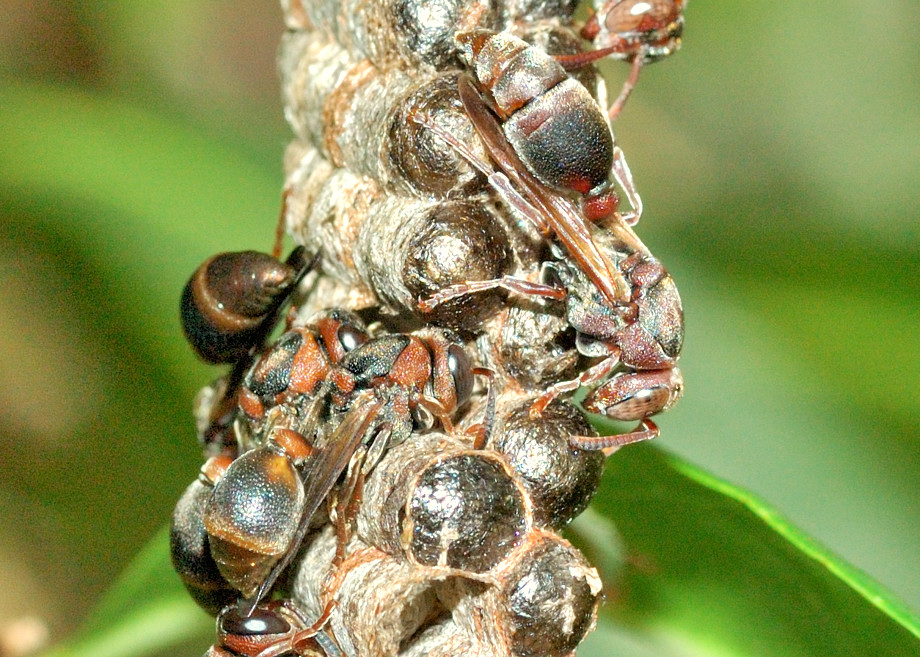 - Body length 10mm
-
- Stick-nest Brown Paper Wasps are common in Brisbane gardens and bushlands. This species is
smallest paper wasps that we found. Their head, thorax, abdomen and wings are
all in dark reddish-brown colour, with darker band on abdomen. They are not aggressive
but will sting if their nest is disturbed.
-
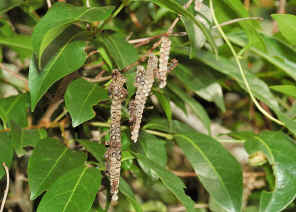
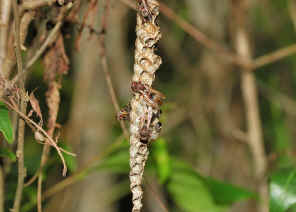
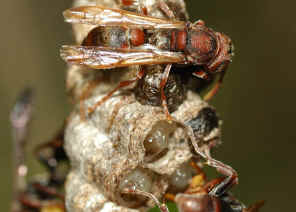
-
- This Small Brown Paper Wasp is dark reddish-brown in colour.
-
-
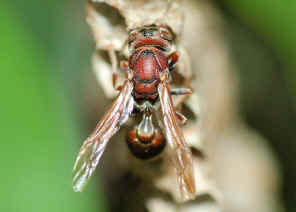
 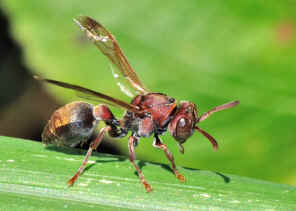
Stick-shaped Nest
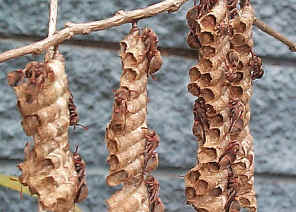 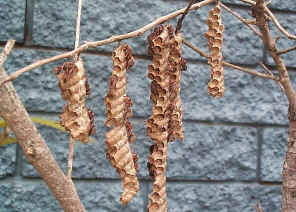 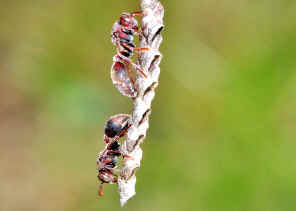
-
- Their nest look like a group of small sticks hanging off branch. The nest consists of several adjacent combs. Each comb is about 100mm
long with one or two columns of cells. The above picture shows the established
paper wasps nest in late summer.
-
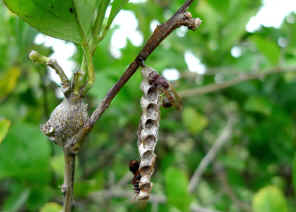
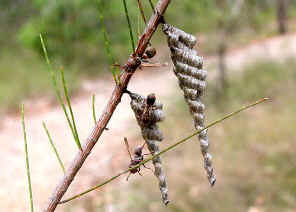
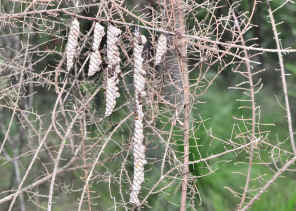
Starting Colony
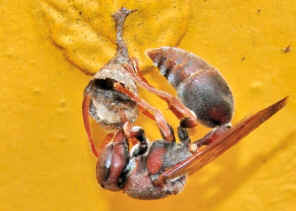 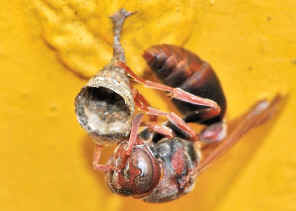
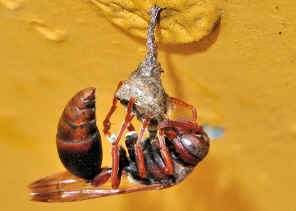 -
- We found that for this species, some of them start a nest with a few wasps
working together. Some start a nest
by one single female. She will become the queen if she her nest can be established.
-
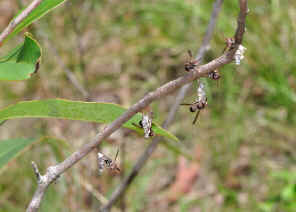
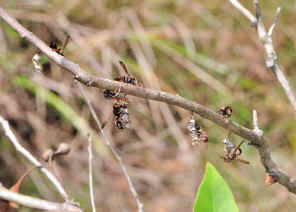
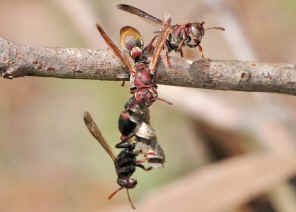 -
- Newly started nests, pictures taken on Jan 2010 in Karawatha Forest. It
seems that this species a few wasps like to make their nests at the same
stem of a plant.
-
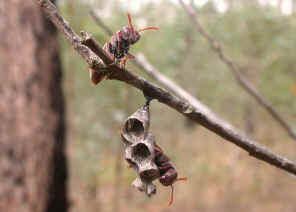
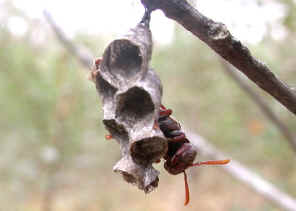
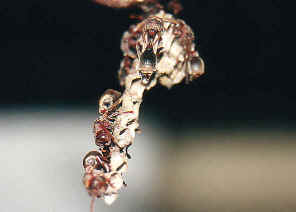 -
- Paperwasps, like all ants and some bees, are social insects, each nest is a
colony of females. Only one female, the queen, lays all the eggs. All the other
females are workers, they help their mother queen for feeding their sisters. At
the end of the summer season, the colony produces males and fertile females. They mate with the males and fertile females from other colonies. The
fertile females then hind in some place for the winter, then start
their own colony in the spring season.
-
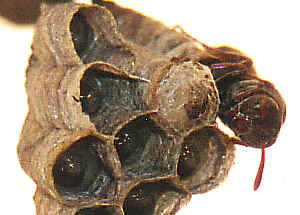
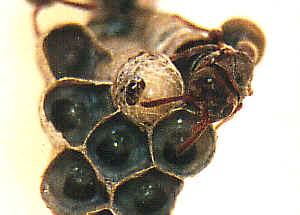 
-
-
- The above pictures show a wasp attending a larva. Paper Wasps feed their
young with insects such as caterpillars. Adult wasps feed on nectar. Notice the
way how to keep their wings when rest. This is the common characteristic of all
paper wasps. Other wasps do not keep their wings in this way.
-
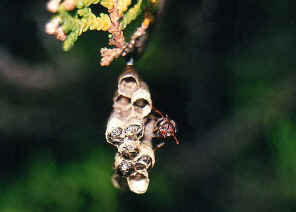 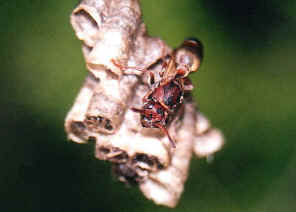
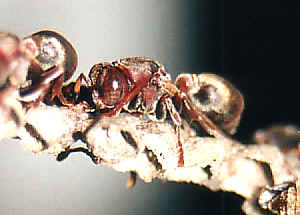
-
- Paperwasps setup nest in spring season. A few wasps
work together to build the nest. They could be sisters. The second
picture show a working wasp. Paper Wasps have a yearly cycle of their life. In
spring season a Paper Wasp female starts building its nest. She will be the
queen if her colony can be established. Paper Wasps build nest under
sheltered area, such as under palm leaf, large tree trunk and building
covers.
-
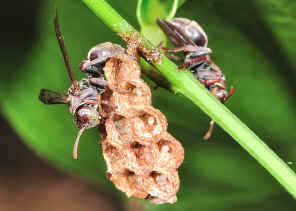
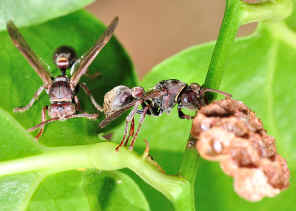
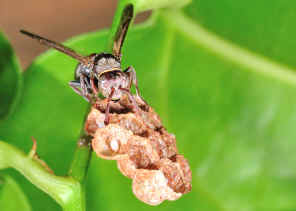 -
Hunting
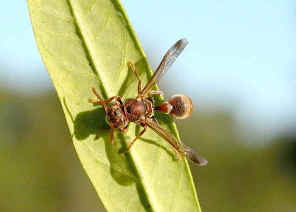 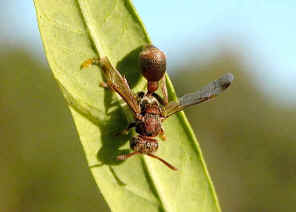
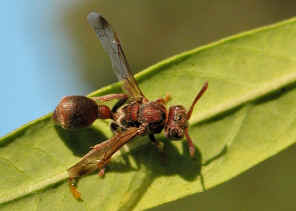 -
- Workers forage food, i.e., caterpillars and some other soft body insects to feed the larvae in the nest. Adult wasps
feed on nectar from flowers.
-
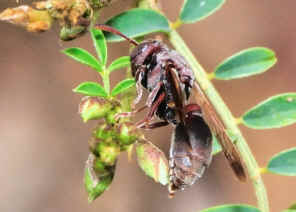
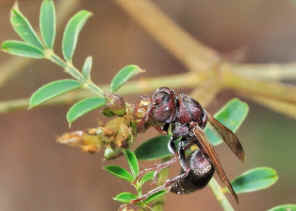
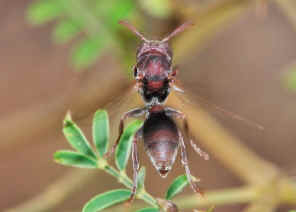
Nest-keeping
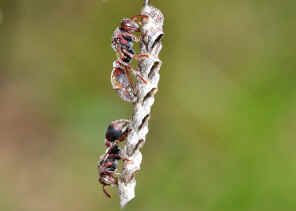
-
- Those developed nest were found on Mar 2010.
-
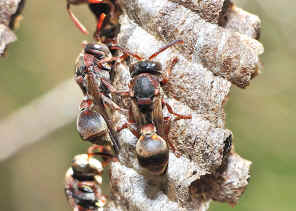
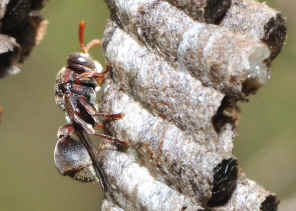
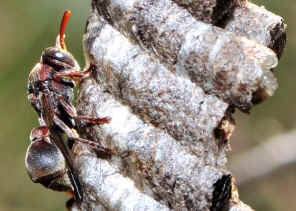 -
- Paper Wasps make their nests by chewing decayed wood
mixing with their saliva. A number of hexagonal shape cup cell grouped together to form a
comb. An egg is lay in each cell. The larva develops and pupates inside the
cell, emerges and becomes an adult wasp.
-
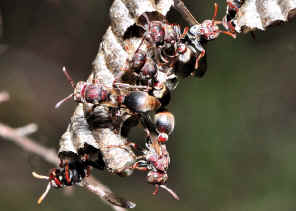
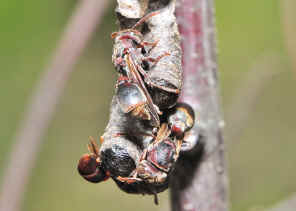
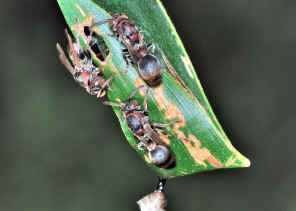 -
- Workers forage food, i.e., caterpillars and some other soft body insects to feed the larvae in the nest. Adult wasps
feed on nectar from flowers.
-
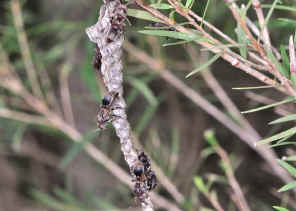
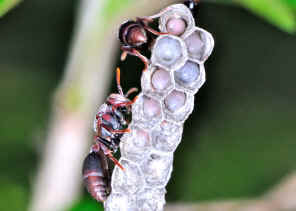
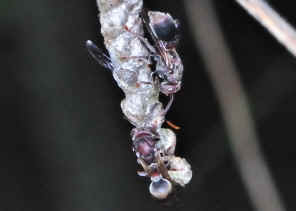
- Reference:
- 1. Wildlife
of Greater Brisbane - Queensland Museum 1995, p114.
- 2. The
Australian social wasps (Hymenoptera : Vespidae) - Richards, OW
(1978), Australian Journal of Zoology Supplementary Series 26
, 1–132.
- 3. OBSERVATIONS ON THE NESTING BEHAVIOUR OF THREE SPECIES OF ROPALIDIA GUÉRIN-MÉNEVILLE
(HYMENOPTERA : VESPIDAE) - AW Hook AND HE EVANS - Australian Journal of Entomology, 1982 - Wiley Online Library.
[ Up ] [ White-faced Brown Paper Wasp ] [ Disc-nest Brown Paper Wasp ] [ Dark-faced Brown Paper Wasp ] [ Stick-nest Brown Paper Wasp I ] [ Tree Brown Paper Wasp ] [ Yellow Brown Paper Wasp ]
| |
|













































